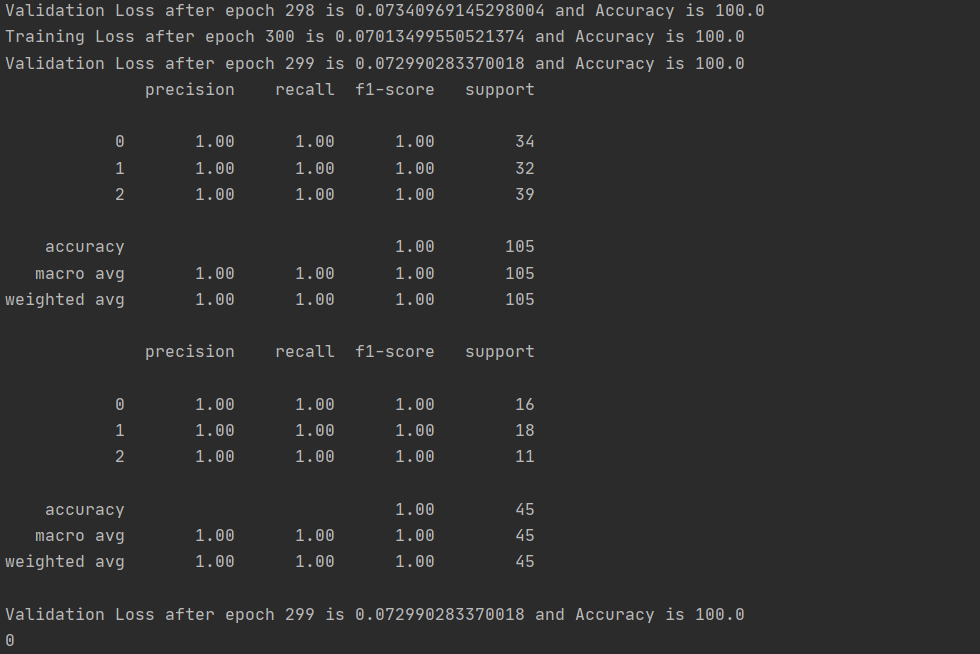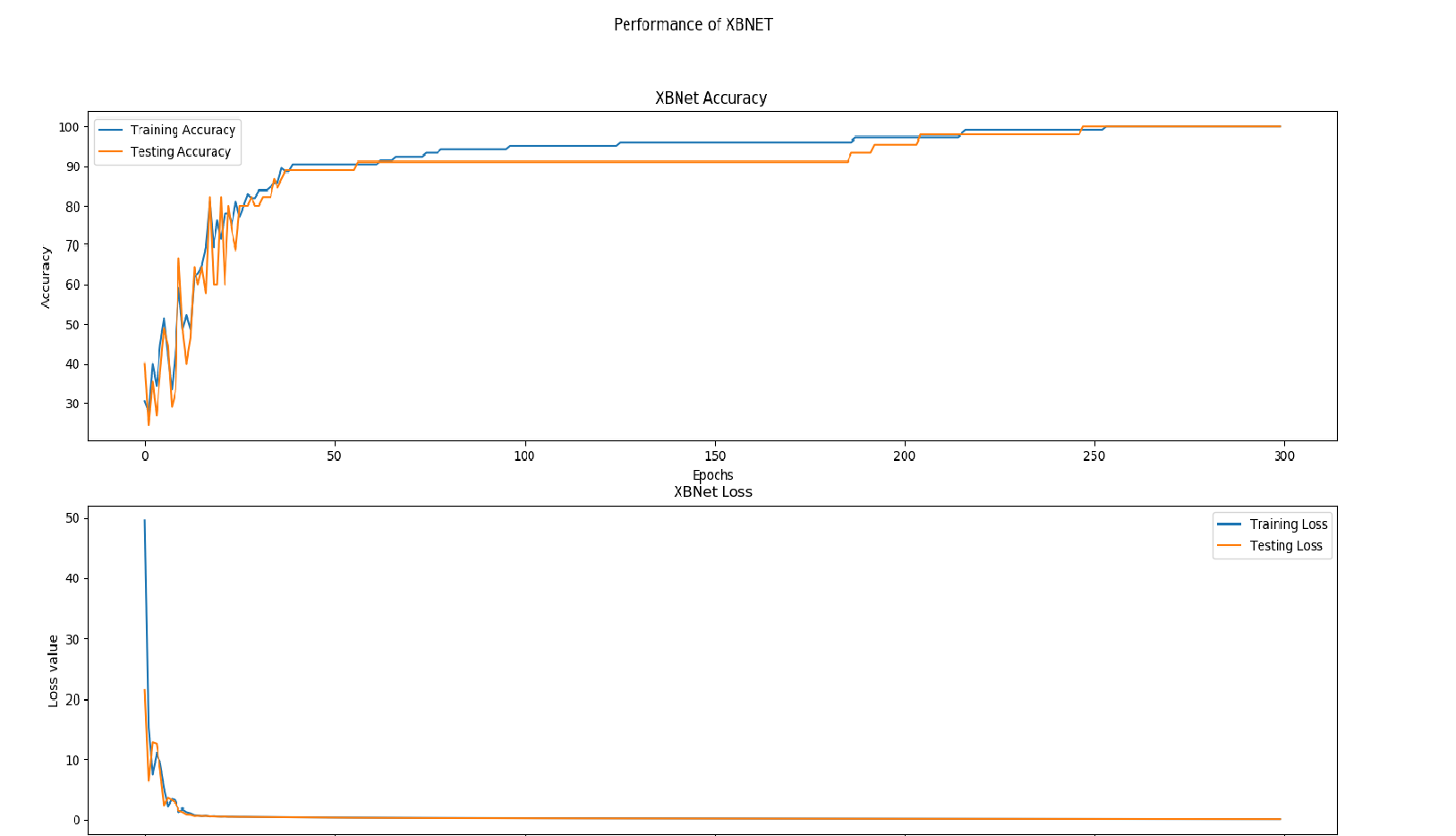XBNet - Xtremely Boosted Network
XBNET that is built on PyTorch combines tree-based models with neural networks to create a robust architecture that is trained by using
a novel optimization technique, Boosted Gradient Descent for Tabular
Data which increases its interpretability and performance. Boosted Gradient Descent is initialized with the
feature importance of a gradient boosted tree, and it updates the weights of each
layer in the neural network in two steps:
- Update weights by gradient descent.
- Update weights by using feature importance of a gradient boosted tree
in every intermediate layer.
Features
- Better performance, training stability and interpretability for tabular data.
- Easy to implement with rapid prototyping capabilities
- Minimum Code requirements for creating any neural network with or without boosting
Comparison with XGBOOST
XBNET VS XGBOOST testing accuracy on different datasets with no hyperparameter tuning
| Dataset | XBNET | XGBOOST |
|---|---|---|
| Iris | 100 | 97.7 |
| Breast Cancer | 96.49 | 96.47 |
| Wine | 97.22 | 97.22 |
| Diabetes | 78.78 | 77.48 |
| Titanic | 79.85 | 80.5 |
| German Credit | 71.33 | 77.66 |
Installation :
pip install --upgrade git+https://github.com/tusharsarkar3/XBNet.git
Example for using
import torch
import numpy as np
import pandas as pd
from sklearn.preprocessing import LabelEncoder
from sklearn.model_selection import train_test_split
from XBNet.training_utils import training,predict
from XBNet.models import XBNETClassifier
from XBNet.run import run_XBNET
data = pd.read_csv('test\Iris (1).csv')
print(data.shape)
x_data = data[data.columns[:-1]]
print(x_data.shape)
y_data = data[data.columns[-1]]
le = LabelEncoder()
y_data = np.array(le.fit_transform(y_data))
print(le.classes_)
X_train,X_test,y_train,y_test = train_test_split(x_data.to_numpy(),y_data,test_size = 0.3,random_state = 0)
model = XBNETClassifier(X_train,y_train,2)
criterion = torch.nn.CrossEntropyLoss()
optimizer = torch.optim.Adam(model.parameters(), lr=0.01)
m,acc, lo, val_ac, val_lo = run_XBNET(X_train,X_test,y_train,y_test,model,criterion,optimizer,32,300)
print(predict(m,x_data.to_numpy()[0,:]))
Output images :


Reference
If you make use of this software for your work, we would appreciate it if you would cite us:
@misc{sarkar2021xbnet,
title={XBNet : An Extremely Boosted Neural Network},
author={Tushar Sarkar},
year={2021},
eprint={2106.05239},
archivePrefix={arXiv},
primaryClass={cs.LG}
}
@misc{1aa4d286-fae9-431e-bd08-63c1b9c848e2,
title = {Library XBNet for tabular data which helps you to create a custom extremely boosted neural network},
author = {Tushar Sarkar},
journal = {Software Impacts},
doi = {10.24433/CO.8976286.v1},
howpublished = {\url{https://www.codeocean.com/}},
year = 2021,
month = {6},
version = {v1}
}
Features to be added :
- Metrics for different requirements
- Addition of some other types of layers




